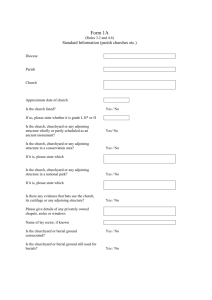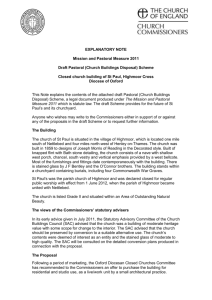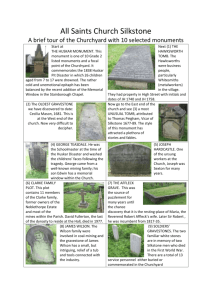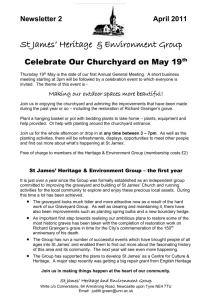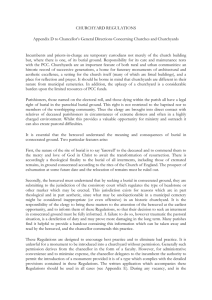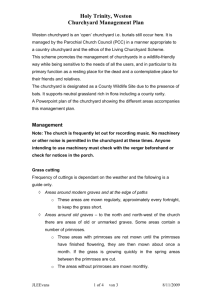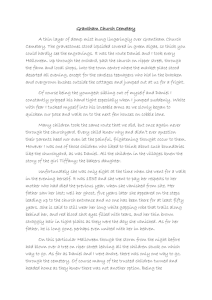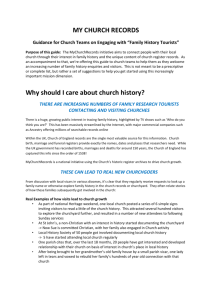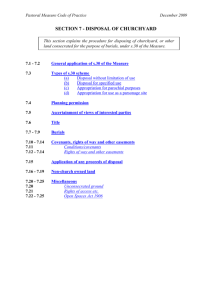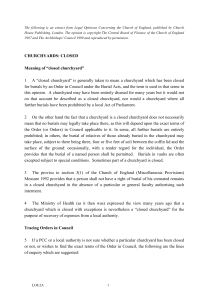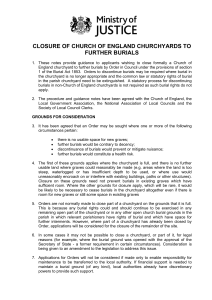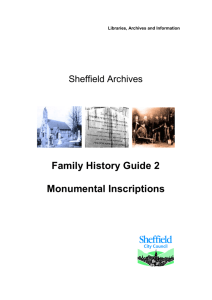Linton Churchyard Readme Mapping Project 2015
advertisement
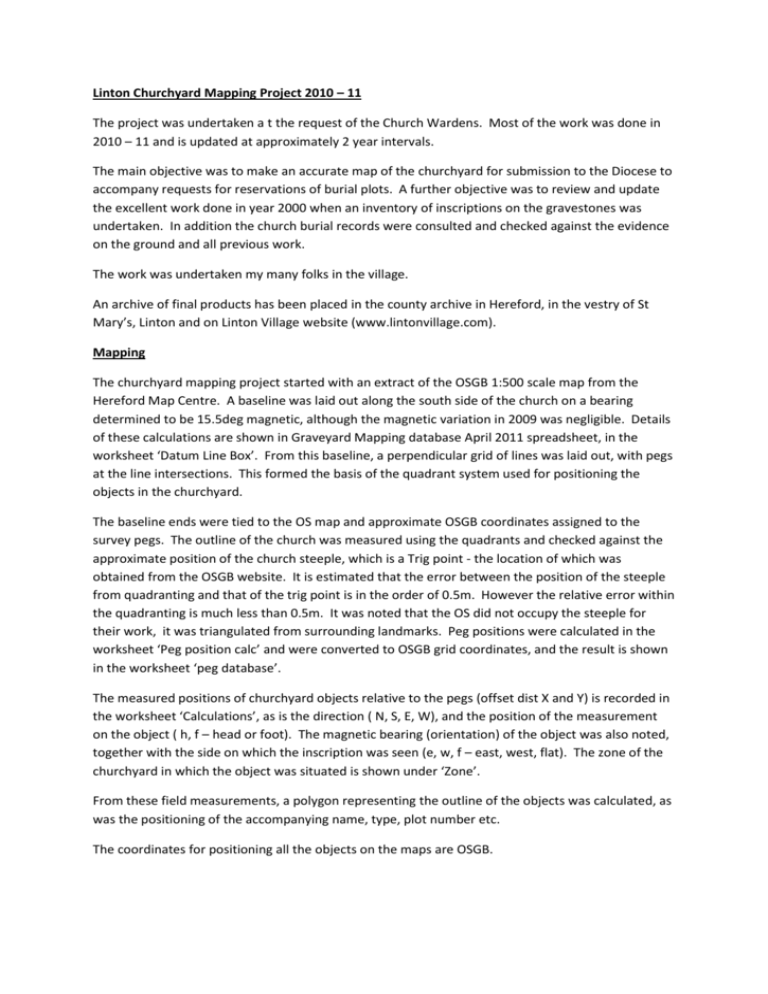
Linton Churchyard Mapping Project 2010 – 11 The project was undertaken a t the request of the Church Wardens. Most of the work was done in 2010 – 11 and is updated at approximately 2 year intervals. The main objective was to make an accurate map of the churchyard for submission to the Diocese to accompany requests for reservations of burial plots. A further objective was to review and update the excellent work done in year 2000 when an inventory of inscriptions on the gravestones was undertaken. In addition the church burial records were consulted and checked against the evidence on the ground and all previous work. The work was undertaken my many folks in the village. An archive of final products has been placed in the county archive in Hereford, in the vestry of St Mary’s, Linton and on Linton Village website (www.lintonvillage.com). Mapping The churchyard mapping project started with an extract of the OSGB 1:500 scale map from the Hereford Map Centre. A baseline was laid out along the south side of the church on a bearing determined to be 15.5deg magnetic, although the magnetic variation in 2009 was negligible. Details of these calculations are shown in Graveyard Mapping database April 2011 spreadsheet, in the worksheet ‘Datum Line Box’. From this baseline, a perpendicular grid of lines was laid out, with pegs at the line intersections. This formed the basis of the quadrant system used for positioning the objects in the churchyard. The baseline ends were tied to the OS map and approximate OSGB coordinates assigned to the survey pegs. The outline of the church was measured using the quadrants and checked against the approximate position of the church steeple, which is a Trig point - the location of which was obtained from the OSGB website. It is estimated that the error between the position of the steeple from quadranting and that of the trig point is in the order of 0.5m. However the relative error within the quadranting is much less than 0.5m. It was noted that the OS did not occupy the steeple for their work, it was triangulated from surrounding landmarks. Peg positions were calculated in the worksheet ‘Peg position calc’ and were converted to OSGB grid coordinates, and the result is shown in the worksheet ‘peg database’. The measured positions of churchyard objects relative to the pegs (offset dist X and Y) is recorded in the worksheet ‘Calculations’, as is the direction ( N, S, E, W), and the position of the measurement on the object ( h, f – head or foot). The magnetic bearing (orientation) of the object was also noted, together with the side on which the inscription was seen (e, w, f – east, west, flat). The zone of the churchyard in which the object was situated is shown under ‘Zone’. From these field measurements, a polygon representing the outline of the objects was calculated, as was the positioning of the accompanying name, type, plot number etc. The coordinates for positioning all the objects on the maps are OSGB. The Graveyard and mapping database spreadsheet also contains worksheets which are lookups for graves, type, surname, Christina name and plot. These were exported as columnar .txt files for input to the mapping package. The mapping package used was from Seismic Micro-Technology. This is normally only used for oil industry mapping. However, the columnar .txt files can be imported into any ‘CAD’ type package and the maps reproduced, probably in a more stylish format. Inscriptions database and burial records Work on the inscriptions was originally undertaken around year 2000. This was found to be an excellent and meticulous piece of work. The burials database lists the names of churchyard ‘residents’, together with their plot numbers. The accompanying older maps, which were routinely used until this latest survey was done, were found to be accurate although largely diagrammatic and record the positions of the plots referred to the both the burials records and the inscriptions database. Additions were made to both the Inscriptions database and the burials records to bring them up-todate. Both the additions and the older work were checked against the visible object currently in the churchyard. Final maps The final maps from the project are presented in .jpg format. These can be printed on any household printer. Finally, if anyone wishes further information on this project, please contact Richard Baker on 01989 720 147, or through St Mary’s, Linton, Herefordshire. List of archive material 1 2 3 4 5 6 7 8 9 Readme Linton Churchyard Mapping Project September 2013. Inscriptions database September 2013. Burial records database September 2013. Historical notes on Linton Village Graveyard mapping database September 2013. Various maps September 2013. OS trig point on church spire OS Benchmark on church wall OS Map of churchyard
